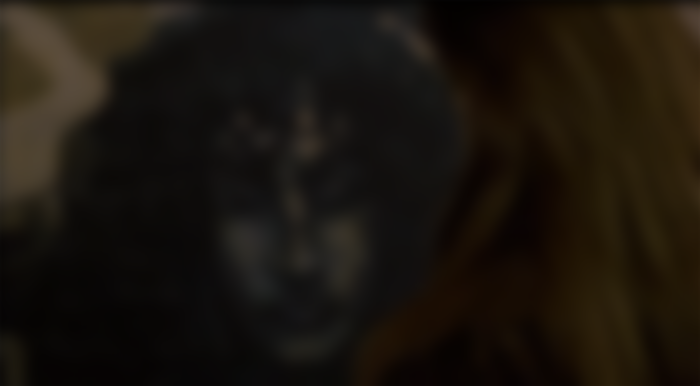
(The Library: Book Series Review) In "Le Théâtre des Vampires", the creatures of the night pretend to be humans, so they can act as vampires. "How avant-garde" would remark Claudia in her sophisticated manners. It is only through this lie that vampires are seen as brilliant actors and actresses instead of monsters. People can be duped that way into believing a comfortable lie rather than the uncomfortable truth. Because admitting that it is a lie, that the vampires are real, frightens people more than going with the "actor and fiction" explanation. As such, people believe them to be humans.
In this review of the series of novels called "The Vampire Chronicles", by Anne Rice, we look at much more than a simple story of good vs. evil. They are often regarded as the best material we have to explore the psyche of those imaginary creatures. Before I delve deeper into all of what this series has to offer, let's quickly summarise this with Pros and Cons. Also, beware, there are no real vampires here but this review contains spoilers. You can keep reading or quit now. This is a choice I was never given...
Pros
Deeply developed characters - Their interactions, love and hate forms the novels
They are powerful and impressive
The myth and its origins shares much of the appeal found with H.P. Lovecraft
I rarely felt bored while reading the novels
The intrigue deepens throughout the books
Provides an interesting historical background perspective (slavery, the plague, the changing times)
Cons
Can be depressing: themes are death, regret, love, friendship, good vs. evil, etc.

This major theme of the novels that I am illustrating here, where vampires and humans are essentially the same creatures, is what makes those novels so interesting. In a quote cited below, from 2008, we know from the author that she felt this way. We easily find characters with which to identify and their emotions towards each other only exemplify our own and often pushes the limits that we normally reach with a finite lifespan. The guilt that they feel when they must trap and kill to survive makes them feel evil about themselves yet they are not fundamentally evil. They each have weaknesses, desires, some positive sides and this duality makes the characters all the more interesting and realistic.
"[The vampires] were metaphors for us ... these were wonderful ways of writing about all our dilemmas in life... for me, supernatural characters were the way to talk about life" --Anne Rice, 2008
Here is what some critics have said regarding here first novel. Their perspectives describe the novels well but the conclusion of the second, I disagree with:
"Hypnotically poetic in tone, rich in sensory imagery," --St. Louis Post-Dispatch
"To pretend that it has any purpose beyond suckling eroticism is rank hypocrisy," --Edith Milton, New Republic

Welcome, to Le Théâtre!
I thoroughly enjoyed reading the Vampire Chronicles. I recommend reading at least the first two novels and also the third, to a lesser degree. The series was written by Anne Rice and the first novel, Interview with the Vampire, was published in 1976. That first novel is what began the Vampire Chronicles. Deconstructing the Théâtre has been a pleasure for me and it is even more interesting from the perspective of the play. It goes as such:
A play where vampires kill a human
Played by humans
Who are played by vampires
As recounted by Louis in Interview with the Vampire
As read by Lestat
As written by Anne Rice
It is classified as Gothic horror, with paranormal themes and it obviously has a strong romantic and melancholic vibe to it. Having sold more than 80 million copies worldwide, it is considered by many to be the best that Anne Rice wrote and also to be fundamental in the list of vampire material.

Obviously, the images in my mind regarding the novels are very much inspired by the well known movie adaptation, by the same name, Interview with the Vampire (1995). First, here is the current chronologically ordered list of novels that comprise the Vampire Chronicles:
Interview with The Vampire (1976)
Vampire Lestat, The (1985)
Queen of the Damned, The (1988)
Tale of the Body Thief, The (1992)
Memnoch the Devil (1995)
Vampire Armand, The (1998)
Merrick (2000)
Blood and Gold (2001)
Blockwood Farm (2002)
Blood Canticle (2003)
Prince Lestat (2014)
Prince Lestat and the Realms of Atlantis (2016)
Blood Communion (2018)
Notice that I am only reviewing the first four novels in this list. The last one I read was The Tale of the Body Thief.

My interest towards the series faded with the years as more novels were added as I found the themes to end up repeating themselves, as is also the case with Dune and with Star Wars. Having read some criticism of the later novels, they confirm my doubts regarding general appreciation: As the series expanded, the mystery disappears and the themes end up repeating themselves or taking new directions that detract from the main appeal or theme of the series. I find this perfectly normal for an author to expand where there is demand. The first three books are often regarded as the best.
At the same time, the images in my mind regarding this fiction are some that I imagined myself while reading the first two novels in my teenage years. I still have vivid representations of certain passages, notably the castle and the wolves, and the way I imagined it at the time. I also imagine that Dracula, by Brahm Stoker, was an inspiration for Anne Rice. She even references the old count through Lestat's words. The portrayal of the vampire as a rich British aristocratic undoubtedly influenced Rice to depict her vampires as elegant and viciously charming.
As I mentioned above, the images from Interview with the Vampire film adaptation also provide vivid imagery and I would say that the adaption is excellent. The cast of actors, their performances, the costumes and special effects were all top notch and since much of the dialogue in the movie (and the script itself) is directly taken from the novels, they all combine to bring authenticity.

Providing an authentic account of what it must feel like to be an imaginary creature requires imagination and inspiration but also, as is undoubtedly the case with Anne Rice, some genuine sorrow. I say this because of mortality in her close family. The multiple Dark Gifts, as the transformation into a vampire is called in the novels, are all instances of bringing the dead back to life. However, this means cheating death and is not without consequences.
Vampires are one with death. Yet they live! When Louis is killed by Lestat and then provided with Lestat's blood, he transforms himself into a Vampire and he describes it as a rebirth. An all new chance to look at the world for the very first time. More than that, the world takes on a new life which he could not perceive before. As if a new dimension had been opened. In Lestat's and other elder vampire's cases, telepathy is also a trait that can be used to read the minds of others.
Vampires living immortal lives share some of the problems that I have examined before when looking at The Eyes of Heisenberg's Optimens. As centuries pass and as the world changes, the vampires do not. They adapt to new customs and new technology but their life is never ending and they cannot forget their past. They are doomed to carry their burdens with them or, as was the case with the child, "the Abomination", doomed to live in a child's body for eternity. Even their facial features are often described as statues. Their perfectly immobile faces and the whiteness of their skin adds to the effect.

The fact that Louis de Pointe-du-Lac was immortalised while having nothing to lose and while inviting death itself has made him an emblem of the falling of the century, as remarks Armand during the story. This is what Lestat all along finds so interesting about his fledgling, the fact Louis represents the sorrow and melancholy of the times given immortal form.
The rich historic background, which in my opinion forms a perfect canvas on which to depict the lives of vampires amongst men, observes the passage of time from the perspective of Louis and then from the perspective of Lestat. I found their perspectives on slavery to be interesting since they are slave owners in New Orleans in the 18th century, while also being predators for their own slaves. They know full well that the blood of free men and woman tastes just the same as the blood of their captive slaves.
The vampire was utterly white and smooth, as if he were sculpted from bleached bone, and his face was as seemingly inanimate as a statue, except for two brilliant green eyes that looked down at the boy intently like flames in a skull. But then the vampire smiled almost wistfully, and the smooth white substance of his face moved with the infinitely flexible but minimal lines of a cartoon. “Do you see?” he asked softly. --Anne Rice, Interview with the Vampire

Slavery
One of the themes I found to be incredibly fitting, is that of slavery in America in the late 18th century. The movie adaptation for a horror theme did an excellent job at depicting the voodoo rituals and shamanic dances performed by the fires lit by the slaves. This adds to the horror theme surrounding the events.
The slaves know there is an evil presence in their master and they are powerless about it. A monster is roaming about and people are losing their lives. Yet the bodies are whole, nearly unharmed except for two small incisions in the neck and the coldness of the body, drained of its blood.
The monster is precise, incredibly fast and needs to feed on a daily basis. Imagine the horror setting for those slaves.
According to Lestat's own view, as is described by Anne Rice, there is no such thing as evil. He is a predator and must consume blood to survive. The morals of those implications and the need to kill constantly is what represents the nightmares of vampires.
Louis and Lestat discuss those morals implications at length. Slavery was commonly accepted back in those times and the moral ambiguity raised by this common acceptance of the horrifying is what the difficulty of living as a vampire is all about.
This historic background is also quite fitting of course since the author, Anne Rice is originally from that part of the United States. In the movie adaptation, the main plantation house was located in the Oak Alley Plantation, Vacherie, Louisiana. Exploration of various parts of the world is also portrayed by the travels of Marius and was used to illustrate this article at length.

Marius and Pandora
The character by the name of Marius was very important for me. Perhaps it represented a mentor that I wish I had back at the time. The character is an old vampire that Lestat meets. Lestat is powerful in his own right but Marius is older and more powerful than him. He is described as tall, sagacious, knowledgeable and positive with a taste for the world.
As such, the novels took a much appreciated turn when it started to focus on discovering the origins of vampires. The way characters communicate, often telepathically or with barely expressed complex emotions brings new mystery to the story. In the backdrop, at least in the latter books in the series, we encounter the Talamasca organisation.
I have memories in mind about the travels of Marius and his ancient knowledge and lore. He certainly is not the main character. Lestat is the main character but Louis also shares a good part of the attention. However Marius is one character that I enjoyed reading about.

Marius represents a certain "key" to the story. We learn what Lestat wants to know through this character and his exposition of the facts regarding vampires. Did Blizzard Entertainment's inspiration for the character of Marius featured in the game Diablo II come from this elder vampire? Possibly. We do have a dark wanderer here also after all.
Vampires sometimes live in societies but sometimes alone. Their solitude can last for centuries and their existence is the only thing that is not ephemeral. All other humans die around them.
This constant death, represented symbolically and literally with the plague that was ravaging the world at the time is the backdrop against which Louis and Claudia are trying to find meaning to their unnatural existence. They both shared total depression, Louis on the night he is turned by Lestat and Claudia on the night she is killed by Louis. They will find what they are seeking at Le Théâtre.

Abomination
The only crime amongst vampires is to kill one another. So says Armand, thus informing Louis that even in vampire covens and pretend Théâtres, they are still stuck in immortal life, always seeking to find meaning in each other. The abomination is obviously Claudia.
Once again, a young girl that was attached to the decomposing body of her dead mother is tenderly taken away, killed by Louis and brought to unnatural life by Lestat. The setting is disturbing and it gets worse. The novels are gothic horror after all. And vampires are blood drinkers.
With Louis's vision of Claudia as a replacement daughter, he finds it difficult to refuse her murderous ways. He obliges and taking the role of the narrator for Interview with the Vampire, he tells us how disturb he felt as seeing Claudia and Lestat kill entire families. Lestat had found in his young protégée, a genius of innocence which acted like a honeypot for their victims.
But to mix the young and adorable looking Claudia into a monster which uses her innocence to attract prey disturbs Louis who then regrets what he did. This dissonance is often used in horror by associating the young and innocent with evil. But Louis knows that he shares the burden of guilt with Lestat. Claudia, in her vengeance, conspires to kill Lestat and seems to enjoy the suffering.
The tale is overall only made more powerful with the tragedy that ensues. And overall, the entire episode revolving around Claudia heightens our perception of how strong Lestat is. To have survived all of this and still be alive? The irony of the dead never staying dead is central to humanity's relationship with death. We need the comfortable lie. Modern times and mainstream media help with that.

Modernity
Throughout the vampires history, as told by Anne Rice, we have a portrayal of human society and its evolution. Vampires do not partake in the affairs of humans, if only remotely and of course, more closely at dinner time.
But this is not to say that vampires ignore the practical aspects of our world. Much to the contrary. The vast fortunes accumulated throughout the centuries are kept with banks and vampires are undoubtedly very respected customers.
The times explored in the novels range from the antiquity and the time of the Pharaohs of ancient Egypt all the way to the modern day where Lestat became a rock star. Well, in his own words, "A Rock Superstar".
As mentioned in the introduction, Anne Rice uses the character of Lestat to criticise the society. Yet, her observations are quite objective; they are witnessed by the eyes of an immortal being that has seen much of what this world had to offer. I quote here Lestat himself when he describes his discovery of the world after his long slumber:
"As I roamed the streets of New Orleans in 1984 this is what I beheld: The dark dreary industrial world that I’d gone to sleep on had burnt itself out finally, and the old bourgeois prudery and conformity had lost their hold on the American mind. People were adventurous and erotic again the way they’d been in the old days, before the great middle-class revolutions of the late 1700s. They even looked the way they had in those times." --Anne Rice, Lestat the Vampire

This capacity for change and the ease with which Lestat embraces the changing world around him are key to making this character the centre piece of the story. Because we travel along the various epochs of human history, we visit certain key areas that evoke horror and also mystery. New Orleans, Eastern Europe, Paris, modern San Francisco just to name a few.
I did not feel that the amount of moral regarding good vs. evil was over examined. It could have been. It is not a central theme. But the observations of the author, as described by Lestat, as he's watching TV present the examination of such subjects in a more profound way. It echoes once again what I wrote about in the reviews of LOTR and LOTF, the enemy within.
Even more follows on the same topic and again, Anne Rice expresses herself by stating that evil was not a necessity, although some argued it was food for genius. Rice tells us through the character that she disagrees with that. Because in that case Lestat could just have been himself, the monster: "Then I could just be Lestat, the monster, couldn’t I?" Again, this passage from Lestat the Vampire, emphasis, in bold, by The Library:
"IN THE amber electric twilight of a vast hotel room I watched on the screen before me the stunningly crafted film of war called Apocalypse Now. Such a symphony of sound and color it was, and it sang of the age-old battle of the Western world against evil. “You must make a friend of horror and moral terror,” says the mad commander in the savage garden of Cambodia, to which the Western man answers as he has always answered: No.
No. Horror and moral terror can never be exonerated. They have no real value. Pure evil has no real place.
And that means, doesn’t it, that I have no place.
Except, perhaps, in the art that repudiates evil—the vampire comics, the horror novels, the old gothic tales—or in the roaring chants of the rock stars who dramatize the battles against evil that each mortal fights within himself."

Queen of the Damned
Who is the Queen of the Damned? Anne Rice herself? I will let you read the novels or see the movie by the same name to find out. Let me simply say that multiple other vampires are met by Lestat, some of which most people that have seen the movie are familiar with. Those include Armand, Magnus, Akasha, Maharet, Mekare, Pandora, Kahyman, and a multitude of others. I would still say that the number of characters was appropriate and their number was not overwhelming.
Vampires are also portrayed as a hierarchy, a matriarchy to be precise where the most ancient has the strongest blood is that of the Queen. She was first and all others can trace their origins back to this one common ancestor.
The novels also contained witches and evocatively named characters such as Pandora, Mael, Magnus, etc. The most recent novel that I read is The Tale of the Body Thief. I liked the novel because it mixed police detective novel with Anne Rice's style and the flamboyance of Lestat. It kept me reading until the end.
Vampires drink each other's blood to make themselves stronger. The act of drinking a victim's blood is often portrayed as a satisfaction of utmost intensity, similar to an orgasm.

Notice that the struggle of the victim is part of the fun. Is it the case for our modern domesticated cats? Perhaps without malice but for the vampire, there is guilt and remorse, for most of them. For Lestat, hunting exclusively criminals was important in his quest to make the world better. He could read minds and could often see the murder as it had happened. From the words of the author:
"One came along eventually, walking right by the fence, a young male with a grizzled beard who had murdered another in some far-off place on the other side of the world. True killer, this one. And oh, that first taste of human struggle and human blood!"
Besides their lust for blood which comes from an ancient spirit, Amel, the vampires of Anne Rice are known to be bi-sexual, androgynous and to marvel at aesthetic beauty. Such beauty was captured well by filmmakers of the past regarding those novels. Aaliyah, the singer and actress who played the role of the Queen of the Damned herself, suffered a tragic accident and perished after the film was finished. Only this time, there was no vampire to bring back the dead.
Had she incarnated her character too strongly? There is no other explanation for her accidental death than the most obvious: it was just an accident. Looking back at the film, we can firmly affirm that she matched the description made by Anne Rice. At least for the eyes, mouth and skin tone. So the Queen of Damned remains Anne Rice. To me, she is known as Vampire Queen!
"I had to find Louis. I had to talk to him. In fact, after reading his account of things, I ached for him, ached for his romantic illusions, and even his dishonesty. I ached even for his gentlemanly malice and his physical presence, the deceptively soft sound of his voice." --Anne Rice, Lestat the Vampire

Coming up next
Next I have to publish this... My readers are never going to believe this story! A Vampire story that deals with human problems. I might as well change my tone next and publish some articles to promote various websites related to cryptocurrencies. One of those is Rollercoin. My next article will take an in-depth look at that online pay to earn game and what it has to offer. Stay tuned and subscribe for more.

Resources

















Thanks for the tip @meitanteikudo! Much appreciated.